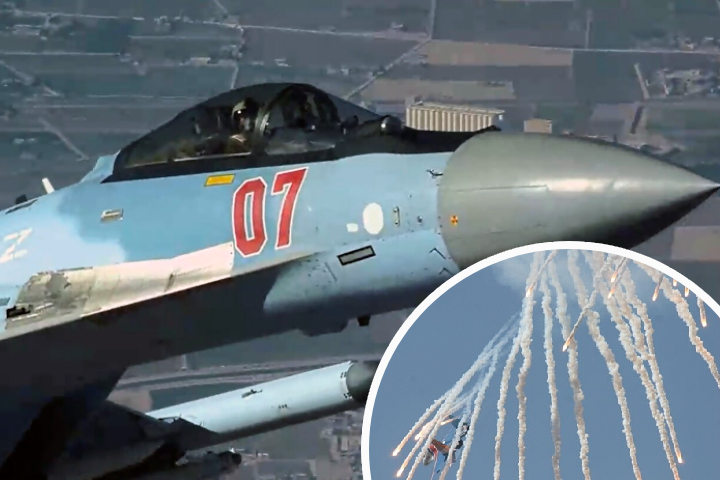


Both the United States and Russia are blaming the other of creating a deadly collision between a U.S. On Sunday, a MQ-9 Reaper drone and a Russian military aircraft flew over Syria.
According to Russian Rear Adm. Oleg Gurinov of the Russian state-run TASS news agency, the US drone nearly collided with Russian airplanes flying near Al-Bab in the northern Syrian area of Aleppo. According to him, the US drone ultimately switched its targeting system on the Russian fighter jet, activating the Russian warplane's defensive systems.
“Russian pilots once again demonstrated high professionalism and took timely measures to prevent collisions with the coalition’s unmanned aerial vehicles,” Rear Adm. Gurinov said.
Lt. Gen. Alex Grynkewich, the head of U.S. Air Forces Central (AFCENT), by contrast, claimed a Russian fighter jet approached the U.S. drone and began “harassing” it before “deploying flares from a position directly overhead, with only a few meters of separation between aircraft.”
“One of the Russian flares struck the U.S. MQ-9, severely damaging its propeller,” he said in a Tuesday press statement.
The US Air Force released a video of the incident. The rear-facing camera on the MQ-9 acquired footage of a fighter plane moving in from behind, followed by blurry forward-facing infrared film that appeared to show a fighter jet dropping a series of flares behind.
“The Russian fighter’s blatant disregard for flight safety detracts from our mission to ensure the enduring defeat of ISIS,” Lt. Gen. Grynkewich said. “We call upon the Russian forces in Syria to put an immediate end to this reckless, unprovoked, and unprofessional behavior.”
The current collision between the US drone and a Russian fighter plane is identical to one that occurred earlier this month over Syria.
On July 5, three Russian fighter planes began flying around three US fighter fighters. MQ-9 drones on a mission against the terrorist organization ISIS. One of the planes, a Su-35, came up behind one of the US drones, pushed ahead, and then activated its afterburner.
According to US authorities, the Russian jet's afterburners changed the air pressure ahead of the MQ-9, decreasing the drone's ability to function safely. A Russian fighter plane also launched three parachute flares around a US drone.
On July 6 and 7, the US Central Command, or CENTCOM, reported more occurrences of Russian aircraft harassing US drones.
“Russian unsafe and unprofessional behavior in the air not only degrades our Defeat ISIS mission, it risks unintended escalation and miscalculation,” CENTCOM commanding Gen. Michael “Erik” Kurilla said of the aerial encounter over Syria on Sunday.
On the 20th of July, Rear Adm. Gurinov claimed a U.S. The F-16 fighter plane utilized its targeting system on a Russian aircraft over Syria, and the US and its allies had just breached an aerial deconfliction zone over Syria.
These accusations between US and Russian soldiers in Syria come at a time when relations between the two nations are already high. Russia has reacted angrily to the United States and its allies giving guns and other military assets to Ukrainian forces fighting alongside Russian soldiers.
In March of this year, the U.S. According to European Command, a Russian fighter plane "struck the propeller" of a US fighter jet. The MQ-9 was flying over the Black Sea when it crashed into the water.
Russian soldiers have also lately began to bombard Ukrainian ports and warn ships passing through the Black Sea that they may be attacked. These assaults and threats to sea commerce may cause the movement of grain from Ukraine to other areas of the world to be disrupted.